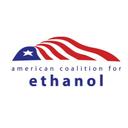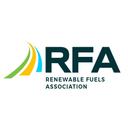In August, the U.S. Grains Council and the American Institute in Taiwan jointly organized a conference on the use applications and sustainability benefits of ethanol in the transportation sector.
U.S. fuel ethanol production was down nearly 1% the week ending Aug. 30, according to data released by the U.S. Energy Information Administration on Sept. 5. Stocks of fuel ethanol were also down 1% while exports fell by 37%.
Blue Biofuels Inc. has been awarded a $1.15 million Phase 2 Small Business Innovation Research grant from the U.S. Department of Energy. The funding will support the final stages of scaling the company’s patented cellulose-to-sugar (CTS) process.
The U.S. Department of Energy Bioenergy Technologies Office (BETO) is overseeing a call for industry partnerships to connect industry stakeholders with the capabilities of the Feedstock-Conversion Interface Consortium.
Operable U.S. biofuels production capacity increased in June, with gains for both ethanol and renewable diesel, according to data released by the U.S. Energy Information Administration on Aug. 30. Feedstock consumption was up for the month.
LanzaTech Global Inc. has signed a master license agreement with SEKISUI CHEMICAL CO. LTD. to deploy, at commercial scale, a jointly developed platform that converts syngas derived from MSW and industrial solid waste into ethanol.
Raízen and Vertoro have signed a joint development agreement (JDA) to enhance the value of lignin produced as a coproduct of cellulosic ethanol production by transforming it into advanced, sustainable biofuels, chemicals, and materials.
Novonesis, formerly Novozymes, on Aug. 27 released second quarter financial results, reporting that sales in its agriculture, energy and tech segment were up 9%, supported by ethanol capacity expansion in Latin America.
Rex American Resources Inc. released fiscal second quarter financial results on Aug. 27, reporting improved margins. Rex also detailed progress with its CCS project and capacity expansion, which are both underway at One Earth Energy in Illinois.
SAFFiRE Renewables LLC broke ground on its pilot plant at Conestoga Energy’s Arkalon Energy facility in Liberal, Kansas, marking a significant step in SAFFiRE’s journey to transform corn stover into an abundant low carbon feedstock for SAF.
The Iowa Utilities Commission on Aug. 28 found that Summit Carbon Solutions LLC has substantially complied with the requirements of its June order regarding the company's application for a hazardous liquid pipeline permit.
RFA: Ethanol industry continues to lead energy sector in veteran employment, other key workforce statistics
The U.S. corn ethanol industry continues to stand out for its employment of military veterans, according to the United States Energy & Employment Report released on Aug. 28 by the U.S. Department of Energy.
SAF Magazine has announced the six companies selected to pitch to a group of investors at Pitch Day at the 2024 North American SAF Conference & Expo, taking place Sept. 11-13 at the Saint Paul RiverCentre in Saint Paul, Minnesota.
U.S. fuel ethanol production declined by more than 2% the week ending Aug. 23, according to data released by the U.S. Energy Information Administration. Stocks of fuel ethanol were down slightly, while exports were up 77%.
The U.S. DOE on Aug. 28 released its annual U.S. Energy and Employment Report, which shows jobs in corn ethanol, woody biomass, and other types of biofuel all increased in 2023. Corn ethanol employment was up 2%.
The USDA currently predicts fiscal year (FY) 2025 U.S. ethanol exports will reach $4.3 billion. Export volumes are expected to edge up to a record 2 billion gallons, according the agency’s latest quarterly trade outlook, published Aug. 27.
The American Coalition for Ethanol honored a select group of advocates for their contributions to the ethanol industry during its 37th annual conference. The event was held Aug. 20-22 in Omaha, Nebraska.
The government of Brazil on Aug. 22 announced it will offer R$6 billion ($1.09 billion) to support the development of biorefineries to produce sustainable aviation fuel (SAF) and sustainable marine fuels.
Canadian National Railway and Canadian Pacific Kansas City, the country’s two largest rail carriers, on Aug. 26 resumed operations after the Canadian Industrial Relations Board took action over the weekend to end a work stoppage that began Aug. 22.
Caramuru, a Brazilian oilseed processor, on Aug. 20 announced it has formed a joint venture (JV) with Brazil based Biocen - Bioenergia Celeiro do Norte S.A to develop a corn ethanol plant in central Brazil.
ACE presented the Merle Anderson Award to John Christianson, a pioneer of the renewable fuels industry. The award is given to individuals who display unmatched dedication and support to the organization and the domestic ethanol industry.
Sens. Sherrod Brown, D-Ohio, and Pete Ricketts, R-Neb., in August introduced the Renewable Chemicals Act, a bill that aims to create a tax credit to support the production of biobased chemicals.
Gevo Inc. announced a purchase agreement for its low-carbon intensity fuel blendstock with Shell Global Solutions Deutschland GmbH for use in motorsports. Gevo’s renewable blendstock is is made from sustainable feedstocks, like agricultural waste.
U.S. fuel ethanol production expanded by more than 2% the week ending Aug. 16, according to data released by the U.S. Energy Information Administration on Aug. 21. Stocks of fuel ethanol were up nearly 1% and exports were up more than 15%.
The RFA, Growth Energy and the USGC are among nearly three dozen U.S. agricultural and biofuel groups that sent a letter to Canadian Prime Minister Justin Trudeau on Aug. 19 urging him take action to ensure continued rail operations.
The Canadian government on Aug. 19 announced it will award up to C$6.59 million to Bioindustrial Innovation Canada to support the development of technologies to produce bioenergy, biofuels and biomaterials.
In comments submitted on Aug. 16 to the Surface Transportation Board, the Renewable Fuels Association stressed the importance of consistent, safe, and timely rail transportation to the ethanol industry and its customers. The
The American Coalition for Ethanol announced the re-election of several board members to the organization’s board of directors during its annual business meeting on August 14, 2024, prior to ACE’s 37th annual conference in Omaha, Nebraska.
The USGC recently took another step toward tapping into the market potential of the world’s most populous nation by escorting a group of Indian food and beverage industry leaders on a tour of U.S. farms, ethanol plants and research facilities.
Brazil-based renewable energy company Be8 on Aug. 14 announced it has broken ground on a wheat-to-ethanol plant in Brazil. The 220-million-liter-per-year (58.12 MMgy) facility is currently scheduled to begin operations in 2026.
Advertisement




























